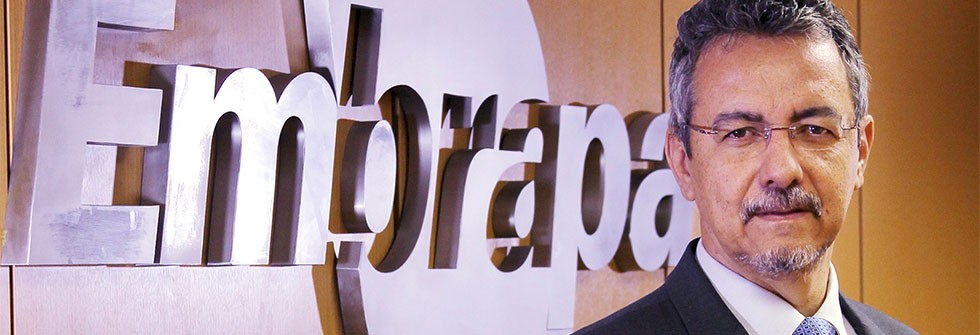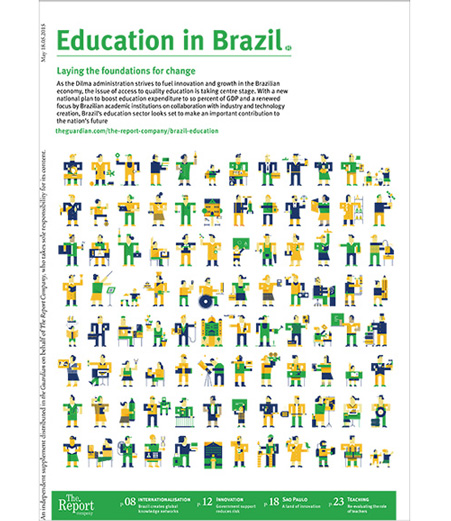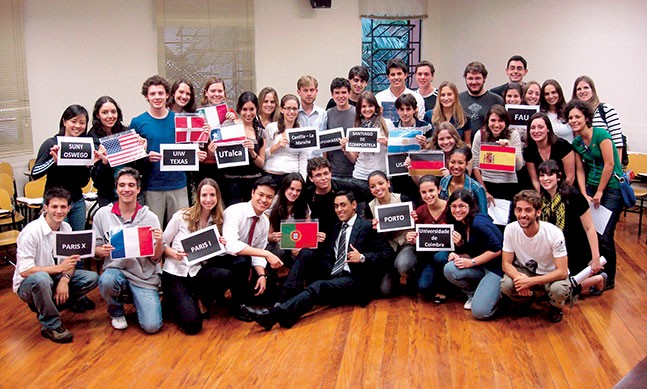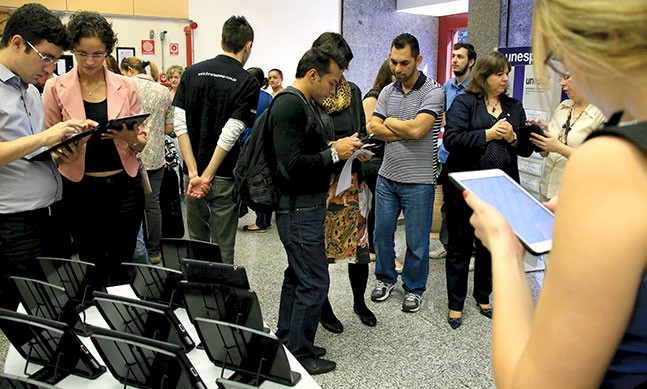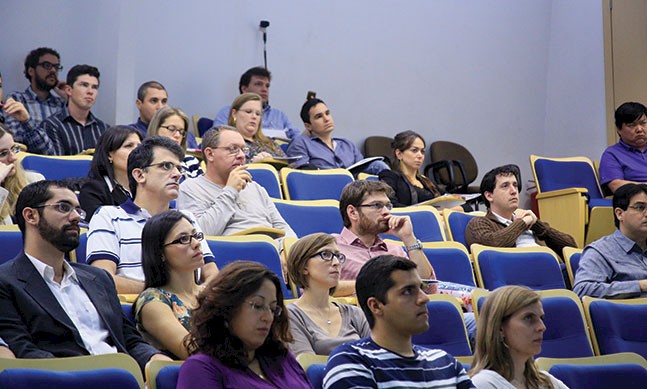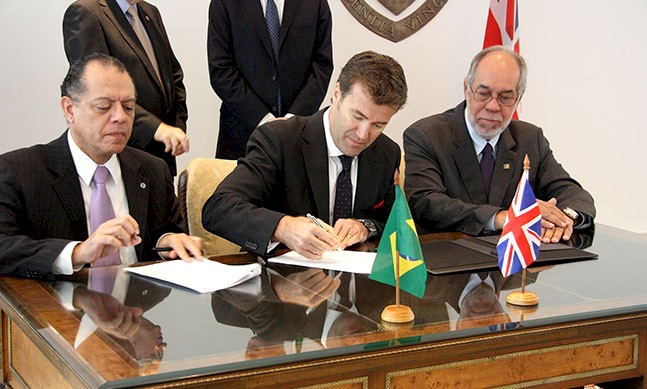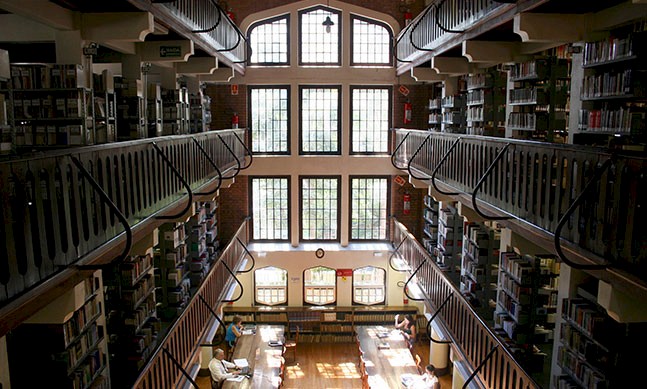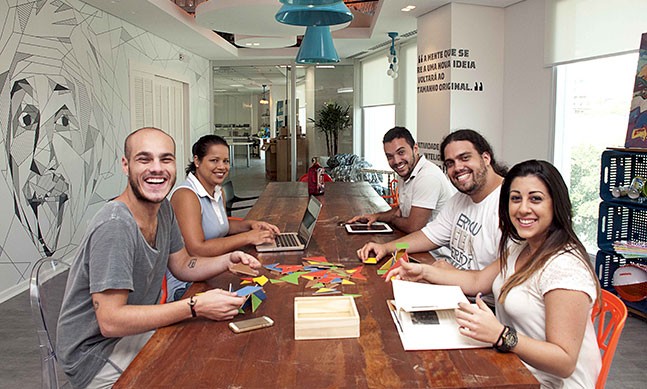The Brazilian Corporation of Agricultural Research (Embrapa) has been behind a complex, science-led revolution in Brazilian agriculture over the last four decades. Established in 1973, it has not only helped the country to overcome huge hurdles in its pursuit of self-sufficiency in food, but also to become a global reference in soy production and one of the world’s most important meat producers. Its president, Mauricio Antonio Lopes, has been part of the Embrapa council since 1989. By introducing key additions to the corporation’s structure, including think tanks and technology agencies, Lopes is adamant that Brazil is ready not just to plan for the future global demands of agriculture, but to shape them.
The Report Company: What have been Embrapa’s standout achievements?
Mauricio Antonio Lopes: Over the last 40 years, Brazil has developed its agriculture and cattle raising more than any other country. As recently as the 1970s, we were food importers, prone to shortages of even basics like milk, and known as exporters of sugar and coffee. At the beginning of the 1970s, faced with that situation, the government opted for science-based agriculture adapted to the tropics, the most challenging environment for food production, and Embrapa was founded. At the same time, the universities were strengthened with state-based research institutions and a system of rural technical assistance was put in place, resulting in the Brazilian agriculture boom.
Two elements of our early history should be noted. First there is the fact that around 3,000 young researchers were sent to the best universities in the world. They visited and interacted with the best agricultural research centres around the globe, came back to Brazil and strengthened Embrapa. Also, rather than simply creating a large research centre in Brasilia, it was decided that a network of them be disseminated throughout the country’s six biomes.
Brazil is a complex country, not only because of its size, but also environmentally. Expanding agriculture into these different biomes is not easy, but by establishing itself close to all of the country’s different challenges, realities, problems and producers, Embrapa made today’s success possible.
What we managed to do was adapt and develop technologies that converted vast areas of poor, tropical soil into fertile land. Then we tropicalised our agriculture and cattle production, adapting soy, which came from temperate China, bringing in Nelore cattle that also adapted really well to Brazil, allowing us to become one of the most important meat producers in the world. We further developed African grasses, too, which provided a good pasture for our cattle. This was all achieved on a foundation of unrivalled sustainable practices. We now have to plan the next revolution in agriculture, the verticalisation or sustainable intensification of production.
TRC: How do you measure success in your administration and what are your goals?
ML: We are gradually moving from an economic impact rationale to the impact on the three dimensions of sustainability. The economic impact is important, because without profits and revenues, agriculture will not move forward, but we cannot forget the social and environmental side. I would like my administration to be evaluated based on its advances in sustainability, considering profitability, environmental gains and social inclusion. I believe that the social aspect of our work is developing the means and strategies to include small, traditional producers in the market.
TRC: What role will private companies play in the sector and how do you see them working alongside the public sector?
ML: Our goal is to create synergies with the private sector, not compete with it. The impact of our plant varieties at the beginning of the agricultural revolution in Brazil was great because the private sector was not ready at that time, but now companies have come to Brazil and started investing, creating jobs, bringing new technology and investing in innovation. The public sector has a key role to play by clearing a path for research, removing limitations and uncertainty, taking risks so the private sector is stimulated to invest also. This is one of the goals of my administration, to make the partnership and synergy with the private sector easier.
Embrapa has 162 contracts with public and private partners today, including all the large agribusinesses like Monsanto, Bayer and Basf. We have a lot of experience dealing with the private sector but we do not deal directly with the market. Our innovations flow to the market thorough partnerships with companies. For example, we have 80 percent of the forage grains market that runs through the Unipasto association of 30 private companies. But we want our relationship with the private sector to grow and become more sophisticated. I firmly believe in open innovation and the combining of assets because, when done intelligently, it can produce a much greater impact far more quickly, and with less risk.
“We consider that innovation increasingly depends on basic, fundamental knowledge, and we want to get closer to universities because this represents an opportunity for Embrapa to expand its knowledge base.”Tweet This
TRC: How are you encouraging the private sector to come on board with greater investments and commitments to new partnerships?
ML: We have to think of strategies and new stimulus policies that facilitate this integration. I think we lack policies and mechanisms that bring academics and entrepreneurs together. I came up with a new concept that can challenge this reality - called Embrapatec. It is an attempt to create a mechanism that brings us closer to the private sector and makes this kind of partnership easier and more dynamic. It will be a semi-private organisation able to receive Embrapa's assets and have them flow more easily to the private sector, and have greater freedom to deal with contracts, intellectual property and communication.
Also, we consider that innovation increasingly depends on basic, fundamental knowledge, and we want to get closer to universities because this represents an opportunity for Embrapa to expand its knowledge base. New innovation depends increasingly on sophisticated knowledge that will drive cutting edge fields such as nanoscience, synthetic biology and so on, but we need the mechanisms, policies and incentives to access, generate and apply new knowledge. Brazil has all the right ingredients.
TRC: How can Embrapa continue to grow despite budget cuts?
ML: We have been seeking other paths, like the National Development Bank (BNDES) which allows us to consider projects on a whole new dimension in terms of development, not just research. We want to develop the entire value chain for aquaculture in Brazil, not simply from the academic or scientific perspective. Which native species can be developed commercially? What sort of industry will we need to make it work as a business in terms of inputs, machines, equipment, food, processing? We have to consider the whole chain, evaluate possible bottlenecks and, together with a bank that considers the development of the country, not just scientific production, tackle them. The budget needs to be linked to opportunities, and the opportunities are there to be embraced.
TRC: What are the international horizons for Embrapa?
ML: Embrapa has been international from its inception, when more than 3,000 of our researchers were sent around the globe and we developed relationships with the best universities and research organisations in the world. Soy was only tropicalised because we were in touch with the best centres dedicated to improving it. In the last 15 or 20 years, this process was intensified precisely because we realised that there are no borders for science. We established virtual laboratories 16-17 years ago and today, in terms of scientific cooperation, we have solid links established across three continents: North America (USA), Europe (France, UK and Germany) and Asia (South Korea, China and, in the near future, Japan).
TRC: Investment opportunities in Africa were a major part of former president Lula’s policy. What is Embrapa’s role in the ongoing consolidation of ties in the region?
ML: The most important opportunity for Brazil is adapting and adjusting the knowledge we have already developed for tropical agriculture. We also want these countries to bypass limitations for the development of their own solutions and help them attain food security in a shorter time. It doesn't make sense for them to go through what we went through when most of the problems in tropical agriculture are here and we have already found solutions for them.
However, we are not naïve. It isn’t just about using Brazilian technology in Africa; that is not how agricultural technology works. We have to understand the peculiarities of their environment and work on modulations, variations and adaptations. We want them to gain time. We don't want them to have to redo everything we've done. By being there, we are learning a lot, developing networks there, but we can go beyond agricultural innovations. We are also working with institutional innovation as well, so that institutions are stronger and talent will settle there.
“We are still very light on strategic intelligence in Brazil, and we’ve grown accustomed to reacting rather than planning. My goal is to turn that around.”Tweet This
TRC: What are your plans for Agropensa, Embrapa's think tank?
ML: Creating a think tank for Embrapa was inspired by the time I spent in South Korea. The rationale and the modus operandi behind South Korean society — as well as the way their institutions and the state operate — impressed me greatly, particularly the strengthening of the relationship between companies, academia and public institutions.
Unfortunately, we are still very light on strategic intelligence in Brazil, and we’ve grown accustomed to reacting rather than planning. My goal is to turn that around by bringing in people that are capable of foreseeing possible futures, risks, challenges and opportunities. We want Agropensa to be a think tank that is totally connected to the real world, not working in abstract terms. We have already produced our first product, a vision document that discusses what is going to happen in the next 20 years.
TRC: And what is your vision for the next 20 years?
ML: Sustainability is definitely a top priority for society, along with climate change and the intensification of climate stress. Rapid urbanisation and a dwindling rural workforce will demand more automation, more machines and equipment.
The link between food, nutrition and health is also crucial. Health systems are under great stress throughout the world and we will have to produce more nutritious food to lessen their burden. Brazil needs to be self-sufficient in phosphates and nitrogen to compensate for our naturally poor soil, too, but science is changing and converging. Synthetic biology, for example, will certainly cause ruptures. When the UK can produce a steak in a petri dish, Agropensa needs to think what that means for a country with 200 million head of cattle. When will that rupture happen? In five, ten or fifteen years? This way, we are preparing for it.
“When the UK can produce a steak in a petri dish, Agropensa needs to think what that means for a country with 200 million head of cattle.”Tweet This


